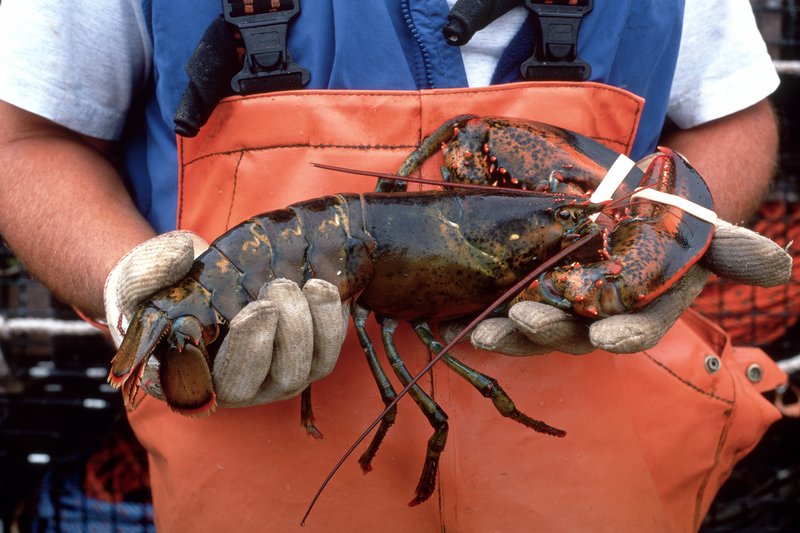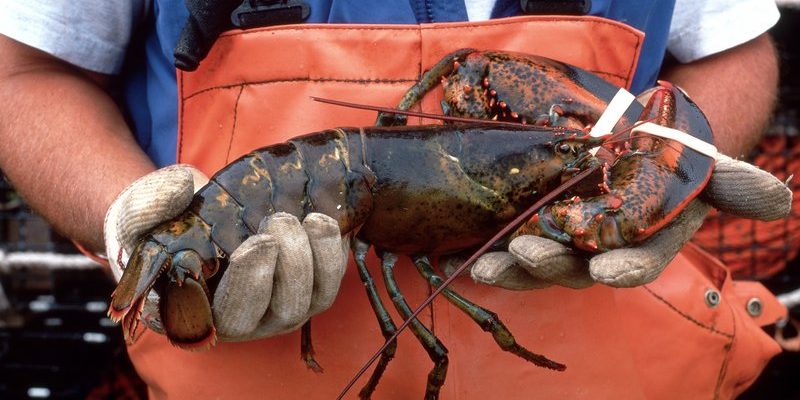
Imagine being a lobster, navigating rocky crevices, searching for food, and trying to avoid becoming someone else’s meal. Unfortunately, the ocean isn’t always a safe place for them. With everything from climate change to overfishing at play, these creatures have some tough battles to face. In this article, we’ll dive deep into the common threats to the lobster in the wild, exploring how they impact these resilient animals and what it means for our oceans.
1. Overfishing: The Unforgiving Harvest
Overfishing is one of the biggest threats to lobsters. Picture a bustling seafood market where lobsters are being pulled from their homes faster than they can reproduce. It’s a tough reality. Fishermen, looking to meet demand, often take more lobsters than the population can sustain. When this happens, it disrupts the delicate balance of the ecosystem.
Lobsters have specific breeding patterns. They reach maturity between 5 and 7 years of age, and if too many adults are removed from the population, it can take years for numbers to bounce back. This not only affects the lobsters but disrupts the food chain as well. When lobsters are overfished, other marine species that rely on them for food can suffer, leading to a ripple effect through the entire marine environment.
To help combat overfishing, various organizations and government bodies have implemented regulations, like size limits and catch quotas for lobster fishing. It’s a step in the right direction, but it requires cooperation from both fishermen and consumers to create sustainable practices.
2. Climate Change: The Heat Is On
Climate change is another significant threat lobsters face. You might be thinking, “What does the weather have to do with lobsters?” Well, a lot actually! As ocean temperatures rise, it affects everything from lobster behavior to their habitats. Warmer waters can lead to changes in reproduction and feeding patterns, making it harder for lobsters to thrive.
Interestingly, lobsters are highly sensitive to temperature. They prefer cooler waters and can experience stress in warmer conditions. Stress can lead to disease and a decrease in reproduction rates. Plus, climate change can cause ocean acidification, which impacts the availability of food sources for lobsters. When the creatures they depend on for survival, like small fish and crustaceans, are affected, it creates a challenging environment for lobsters to navigate.
It’s crucial to address climate change not just for lobsters but for the health of our oceans and ecosystems as a whole. By reducing our carbon footprint and supporting sustainable practices, we can help keep marine environments healthy for lobsters and countless other species.
3. Habitat Destruction: A Home Gone Awry
Lobsters thrive in rocky habitats where they can hide from predators. Unfortunately, human activities like coastal development, pollution, and dredging can destroy these crucial environments. Think about it: if you had to live in a place where your home was getting taken away or altered, you’d feel pretty stressed!
Construction projects along coastlines can completely change the landscape of the ocean floor. This destruction makes it difficult for lobsters to find shelters to hide from larger predators. Without these safe spots, lobsters are more vulnerable to being eaten. They also need these habitats for breeding and feeding, so losing them can severely impact their population.
Conservation efforts are crucial to protecting lobster habitats. By advocating for responsible coastal development and supporting marine protected areas, we can help ensure that lobsters have safe spaces to live and thrive.
4. Pollution: Contaminants in Their Environment
Pollution is like a dark cloud hanging over the ocean, and lobsters aren’t immune to its effects. Chemicals, plastics, and waste seep into the water, creating an unsafe environment for marine life. You might not see it, but these contaminants can harm lobsters directly and indirectly.
Chemicals from agricultural runoff can lead to harmful algal blooms, which produce toxins that can kill marine life. When lobsters consume contaminated food or breathe in polluted water, their health can suffer. This can result in weakened immune systems, making them more susceptible to disease.
Plastic pollution is another big concern. Lobsters can become entangled in plastic debris, which can injure them or lead to death. As consumers, we can make a difference by reducing plastic use and supporting policies that protect ocean health. Every little action counts!
5. Predation: The Circle of Life
Lobsters are not at the top of the food chain. They have their own predators, including fish, seals, and even other lobsters. While predation is a natural part of the ecosystem, changes in predator populations can affect lobster survival. For instance, if larger predators begin to decline due to overfishing, it can lead to an increase in lobster populations. This might sound good, but it can also result in overpopulation, which then strains food resources and habitat availability.
Moreover, as the ocean environment changes, new predators may emerge or existing ones may adapt their hunting strategies, making it tougher for lobsters to evade capture. It’s a tricky balance, and every change in the ecosystem can have a ripple effect.
To help preserve lobster populations, it’s essential to maintain a diverse and balanced ecosystem. Supporting sustainable fishing practices can help ensure that all marine life has the opportunity to thrive without tipping the scales too far in one direction.
6. Disease: Unseen Threats
Lobsters, like all animals, can suffer from diseases. Factors such as stress from environmental changes or overcrowding can make them more susceptible to illnesses. Diseases can spread quickly in populations, especially if lobsters are forced into closer contact with each other due to habitat loss.
Some common diseases affecting lobsters include shell disease, which weakens their exoskeleton, and various pathogens that can lead to significant mortality. It’s alarming to think that something invisible can pose such a threat, but it’s a reality for these sea creatures.
Research and monitoring of lobster health are crucial to keeping populations strong. By understanding disease dynamics, scientists can better protect lobsters and ensure their future in the wild.
7. Fishing Technology: The Good, The Bad, and The Ugly
While fishing technologies have improved efficiency, they can also pose threats to lobster populations. Traps and nets designed for fishing can unintentionally capture and kill lobsters that are either too small for harvesting or not the target species. This not only impacts the lobsters but can disrupt the entire marine ecosystem.
Furthermore, the use of destructive fishing methods can damage habitats that lobsters rely on for survival. For example, bottom trawling can destroy seabed habitats critical for lobster growth and reproduction.
However, there’s good news! Innovations in sustainable fishing technology are emerging. More and more fishermen are adopting practices that reduce bycatch and minimize habitat damage. Supporting these efforts can help balance the need for seafood with the need to protect our oceans.
Lobsters might not be the first animals that come to mind when we think about endangered species, but they face numerous threats every day in the wild. From overfishing and climate change to pollution and disease, these resilient creatures have a tough road ahead. By raising awareness and supporting sustainable practices, we can help ensure that lobsters and their habitats are protected.
It’s all about balance—ensuring that both lobster populations and the ecosystems they inhabit can thrive together. So next time you enjoy a seafood meal, remember to think about where those lobsters come from and the challenges they face. Together, we can make a difference and help keep our oceans vibrant and healthy for generations to come.

